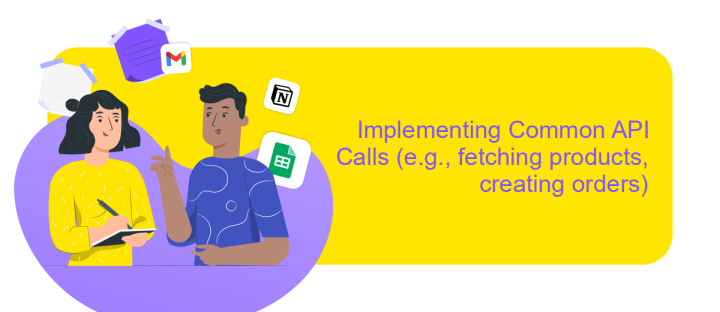Squarespace API Integration
Integrating with the Squarespace API opens a world of possibilities for enhancing your website's functionality and user experience. Whether you're looking to automate workflows, customize design elements, or streamline e-commerce operations, the API provides the tools you need to tailor Squarespace to your unique needs. In this article, we'll explore the key features and benefits of Squarespace API integration, guiding you through the initial steps to unlock its potential.
Introduction to Squarespace API and its Capabilities
The Squarespace API offers a powerful suite of tools for developers looking to enhance and customize their Squarespace websites. By providing access to various functionalities, the API enables seamless integration with external applications and services, allowing for a more dynamic and interactive web experience. Whether you're a developer seeking to automate tasks or a business aiming to extend your site's capabilities, the Squarespace API is an essential resource.
- Content Management: Manage and manipulate website content programmatically, including creating, updating, and deleting posts and pages.
- E-commerce Integration: Access and manage products, orders, and inventory, facilitating a more robust e-commerce platform.
- Data Retrieval: Extract and analyze data from your site to gain insights and improve performance.
- Custom Solutions: Build bespoke solutions tailored to specific business needs, enhancing user experience and site functionality.
Overall, the Squarespace API empowers developers and businesses to create more personalized and efficient web solutions. By leveraging its capabilities, users can significantly enhance their site's functionality, streamline operations, and provide a superior user experience. As the digital landscape continues to evolve, integrating with the Squarespace API ensures that your website remains adaptable and competitive.
Setting up Your Squarespace Account and API Keys

To begin integrating with Squarespace, first log into your Squarespace account. Navigate to the Home Menu, select "Settings," and then click on "Advanced." Here, you'll find the "API Keys" option. Click on it to create a new API key. You'll need to provide a name for your key, which helps in identifying it later. Ensure you select the appropriate permissions for your API key based on the integrations you plan to implement. Once configured, save the key and make sure to copy the generated API key as it will be required for subsequent integration steps.
If you're looking to streamline the integration process, consider using a service like ApiX-Drive. This platform offers a user-friendly interface for connecting different applications, eliminating the need for complex coding. With ApiX-Drive, you can easily link your Squarespace account to various third-party services, automating workflows and enhancing functionality. Simply input your Squarespace API key into ApiX-Drive, and follow the guided steps to set up your desired integrations efficiently. This approach not only saves time but also ensures a seamless connection between your Squarespace site and other platforms.
Key Concepts and Endpoints of the Squarespace API

The Squarespace API offers a robust framework for developers to integrate and extend Squarespace functionalities, allowing for customized solutions that meet specific business needs. Understanding the key concepts and endpoints of the Squarespace API is crucial for effective integration. The API is built on REST principles, enabling seamless communication between applications through HTTP requests and responses. Authentication is handled via OAuth, ensuring secure access to resources.
- Sites Endpoint: Provides access to site-level data and configurations, enabling developers to retrieve and update site information.
- Products Endpoint: Allows for the management of e-commerce products, including creating, updating, and deleting product listings.
- Orders Endpoint: Facilitates interaction with order data, supporting operations such as retrieving order details and updating order statuses.
- Pages Endpoint: Enables manipulation of site pages, including creating new pages and updating existing ones.
- Inventory Endpoint: Manages product inventory levels, allowing for adjustments and retrieval of stock information.
By leveraging these endpoints, developers can create dynamic and responsive web applications that integrate seamlessly with Squarespace sites. Understanding these core components is essential for unlocking the full potential of what Squarespace has to offer, enabling tailored solutions that enhance user experiences and streamline business operations.
Implementing Common API Calls (e.g., fetching products, creating orders)

Integrating with the Squarespace API allows you to automate various tasks within your website, enhancing its functionality and efficiency. One of the most common uses is fetching product data, which can be achieved by making GET requests to the appropriate endpoints. This data can then be used to display product details dynamically on your site.
Another frequent API call involves creating orders. This is typically done by sending POST requests with order details in the request body. By automating order creation, you can streamline your sales process, ensuring orders are processed quickly and accurately.
- Fetching Products: Use the GET method on the /products endpoint to retrieve product details.
- Creating Orders: Send a POST request to the /orders endpoint with necessary order information.
- Updating Inventory: Utilize the PUT method on the /inventory endpoint to adjust stock levels.
By implementing these common API calls, you can significantly enhance the functionality of your Squarespace website. Whether you're managing products or processing orders, the API provides a robust set of tools to automate and optimize your business operations.
- Automate the work of an online store or landing
- Empower through integration
- Don't spend money on programmers and integrators
- Save time by automating routine tasks
Best Practices and Troubleshooting Tips for Squarespace API Integration
When integrating with the Squarespace API, it's crucial to follow best practices to ensure a smooth and efficient process. Start by thoroughly reviewing the API documentation provided by Squarespace to understand its capabilities and limitations. Use secure authentication methods, such as OAuth, to protect sensitive data. Consistently test your integration in a staging environment before deploying it live to minimize disruptions. Additionally, consider using services like ApiX-Drive, which can simplify the integration process by providing pre-built connectors and automation tools, reducing the need for extensive coding.
Troubleshooting issues with Squarespace API integration often involves checking for common errors such as incorrect authentication credentials or outdated API endpoints. Ensure that your API requests are correctly formatted and that you handle error responses gracefully. Logging and monitoring can be invaluable for identifying and resolving issues quickly. If problems persist, consult community forums or Squarespace support for insights and solutions. Regularly updating your integration to align with Squarespace's latest API changes can also prevent potential disruptions and maintain optimal performance.
FAQ
What is Squarespace API and how can I use it?
How do I authenticate with the Squarespace API?
Can I integrate Squarespace with other applications without coding?
What are some common use cases for Squarespace API integration?
Is there a limit to the number of API requests I can make to Squarespace?
Apix-Drive will help optimize business processes, save you from a lot of routine tasks and unnecessary costs for automation, attracting additional specialists. Try setting up a free test connection with ApiX-Drive and see for yourself. Now you have to think about where to invest the freed time and money!


